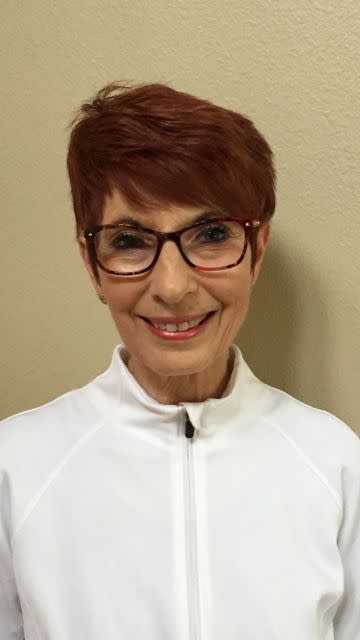'I have to be really careful': What it's like to be diagnosed with osteoporosis in your 40s

Many people think of osteoporosis as a disease of the elderly, but Kathleen Morgan was diagnosed with the condition when she was just 45.
She has a family history of the disease: Her mother and father have osteoporosis, and her sister also developed it in her 40s.
Morgan discovered she was on the path to osteoporosis, a disease that reduces the density and quality of a person’s bones, after going into early menopause. “My mother and sister had an early menopause, and I did, too,” Morgan tells Yahoo Lifestyle. With osteoporosis, bones become weak and can break from a fall or even from sneezing or having minor bumps, according to the National Osteoporosis Foundation.

Morgan’s doctor urged her to do a DEXA scan, a non-invasive test that measures a person’s bone mineral density to see if they’re at risk of osteoporosis. The scan showed that she had osteopenia, a condition that happens when the body doesn't make new bone as quickly as it reabsorbs old bone. (Osteopenia is often a forerunner to osteoporosis.)
She was put on one medication to help prevent bone loss. But it also caused intense acid reflux. “I was so uncomfortable that I had to go off of it,” she says. “I went a year or so without taking any drugs, just to see how I would do.”
Her doctor then did another DEXA scan — and that showed signs of osteoporosis. Morgan was put on another drug but eventually went on a “drug holiday” for two years. When she had another scan, several body parts, including her left hip and spine, were getting close to osteoporosis.
She’s now on a yearly dose of a medication she receives via an infusion. The drug has common side effects such as nausea, flu-like symptoms, and vision issues, but Morgan says she’s been relatively symptom-free.
Still, Morgan says she has to be very careful about her fall risk — and that includes being cautious about using something as simple as using a step ladder in her kitchen. “I’m really aware of where I’m walking and how I’m walking,” she says. “Going up steps, I always hold onto the railing.”
She continues: “As you get older the primary thing is preventing fractures. Usually, after the first fracture, the second isn’t far behind. You can end up bedridden.”
As a result, Morgan avoids high-risk activities. “I don’t do things that could cause a fall or a fracture,” she says. Morgan was once a runner and says she loved the sport, but has to avoid it now. “I know that I will never run again,” she says. “The most I’ll ever get to be is a power walker.”
Morgan has also had to give up other things that she didn’t even realize were an issue, like golf. “We are a family of golfers [but] I looked up exercises not to do with osteoporosis and golf was the first one,” she says. (Twisting at the waist is a problem for people with osteoporosis.) She also recently discovered that a stretch she’s been doing called a lumbar roll, which involves bringing your knees to your chest, is bad for her condition — so she stopped doing it immediately.
She swears that osteoporosis doesn’t stop her from living her life, but Morgan is constantly reminded of her condition. She recently caught the toe of her shoe on the stairs and almost fell — a moment that she says was a reminder of how quickly her life has the potential to change. “I have to be really careful at this point,” Morgan says.
Read more from Yahoo Lifestyle:
Follow us on Instagram, Facebook and Twitter for nonstop inspiration delivered fresh to your feed, every day.
